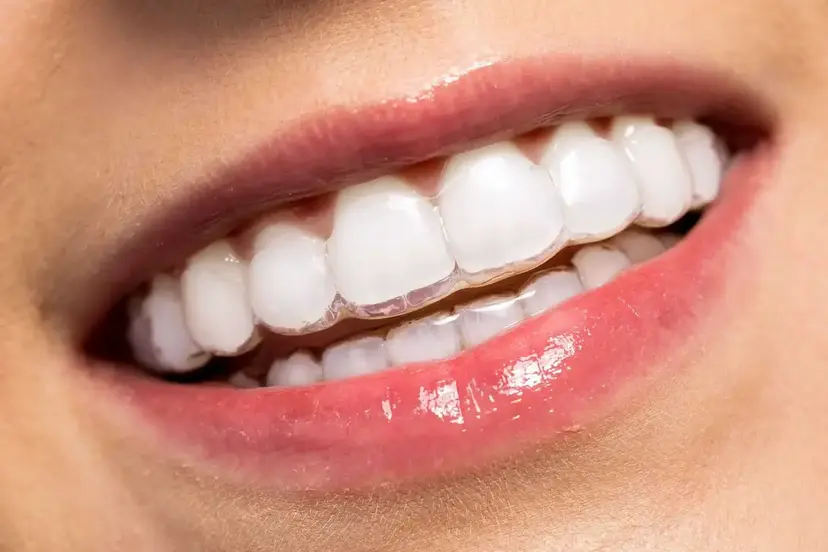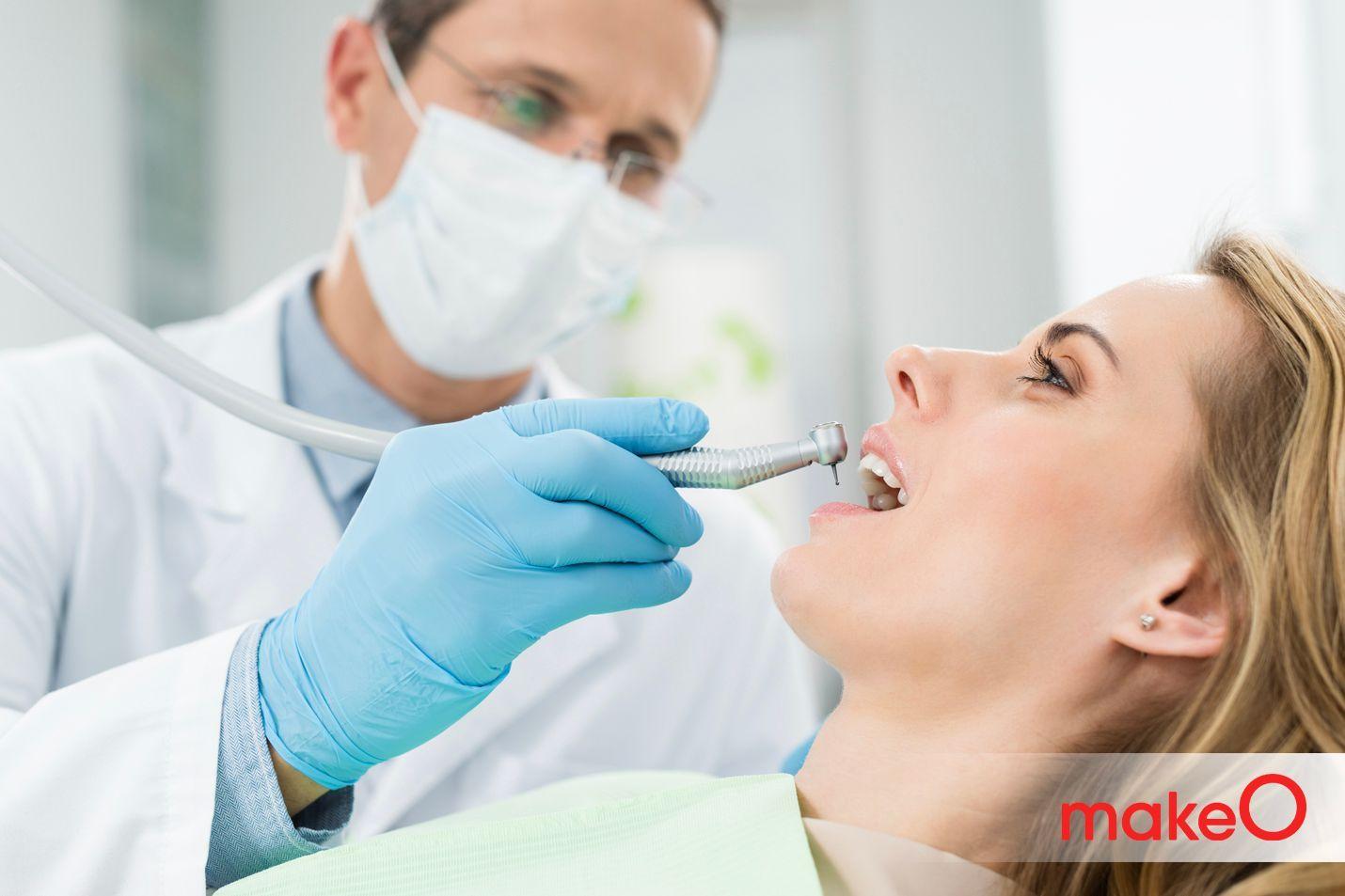MakeO blog
In a healthy mouth, our gums are snug against our teeth. However, due to several reasons, such as poor oral hygiene or genetics, you can develop gum disease which begins to create space or pockets between your teeth and gums. These spaces are called periodontal pockets.
When plaque and tartar build-up goes unchecked, it starts to break down the natural attachment of the gums to the teeth, leading to these pockets. They form an ideal environment for harmful bacteria to grow, leading to further complications like periodontal disease.
Symptoms of Periodontal Pockets
Moving on to the signs, or what we can call periodontal disease symptoms or periodontitis symptoms. These include:
- Red and swollen gums
- Persistent bad breath
- Bleeding while brushing or flossing
- Gum recession
- Loose teeth
However, it's important to note that periodontal pockets themselves may not always come with obvious symptoms. They are often detected during a routine dental check-up. Thus, regular dental visits are important for early detection and intervention.
How to Treat Periodontal Pockets?
Now that we know the periodontal pocket definition and its symptoms, let's delve into periodontal pocket treatment options. Depending on the severity, your dentist may recommend a deep cleaning procedure called teeth scaling and root planing, which removes plaque and tartar from periodontal pockets and smoothes the tooth root to promote healing. In severe cases, surgical treatments may be needed.
Professional teeth cleaning
Oftentimes, with the help of professional cleanings, smaller Periodontal pockets can be minimised. Additionally, your healthcare expert may also ask you to practise proper oral care which includes brushing, flossing and using a microbial mouthwash to ensure that these pockets are germ-free.
Scaling and root planing
Scaling and root planing are non-invasive periodontal pocket treatment procedures done with the help of a laser and instruments like scalers. These devices are used to rid the enamel of plaque, germs, and bacteria. In these procedures, periodontal pockets have antibacterial gel applied on them to kill any bacteria and germs present there too.
How to Prevent Periodontal Pockets?
Prevention is key when it comes to dental health. Here are some valuable tips to help prevent periodontal pockets:
1. Regular Brushing
Brush your teeth at least twice a day using fluoride toothpaste. This removes plaque which, if allowed to build up, leads to gum disease and periodontal pockets.
2. Floss Daily
Flossing removes food particles and plaque from areas that your toothbrush can't reach. Make sure to floss at least once a day.
3. Use Mouthwash
An antibacterial mouthwash can help get rid of bacteria in your mouth, reducing plaque and the risk of gum disease.
4. Regular Dental Check-ups
Visit your dentist every six months for a professional cleaning and check-up. They can spot the early signs of gum disease and provide treatments to stop its progression.
5. Quit Smoking
Tobacco in any form increases the risk of gum disease and can hinder the healing process. Make an effort to quit smoking to improve oral health.
6. Eat a Balanced Diet
Nutritious food promotes strong teeth and gums. Limit your sugar intake as it can encourage plaque growth.
7. Use Interdental Brushes
These tiny brushes are effective in cleaning between your teeth and around braces where your toothbrush may not reach.
8. Limit Alcohol Consumption
Excessive alcohol can lead to dry mouth, which encourages bacterial growth and contributes to gum disease.
9. Hydrate
Drinking water helps to wash away food particles and keep your mouth moist, discouraging bacterial growth.
10. Manage Underlying Health Conditions
Certain health conditions like diabetes can increase your risk of periodontal disease. Ensure you are managing any such conditions with the help of your healthcare provider.
By following these tips, you can significantly reduce your risk of developing periodontal pockets and maintain a healthy smile. Remember, a good oral hygiene routine and regular dental check-ups are the cornerstones of oral health.
Prevent Common Dental Woes with makeO toothsi
Here's where makeO toothsi clear aligners come into the picture. These easy-to-use, removable, durable and entirely invisible aligners not only help straighten your teeth, giving you a confidence-boosting smile but also make it easier for you to maintain your oral hygiene. Crooked or crowded teeth often make cleaning difficult, leading to plaque and tartar build-up – the primary cause of periodontal pockets.
By straightening your teeth with makeO toothsi clear aligners, you make it easier to keep them clean and healthy, thus reducing the risk of developing periodontal pockets.
To wrap up, remember to never underestimate the importance of regular dental check-ups and a good oral hygiene routine. And if you're considering straightening your smile, check out makeO toothsi clear aligners – they can be your ally in the fight against periodontal pockets. Keep smiling and stay healthy!
FAQs
What causes periodontal pockets?
Poor oral hygiene leading to plaque and tartar build-up is the main culprit. Other factors can include smoking, genetics, and certain illnesses.
How are periodontal pockets diagnosed?
They are typically discovered during a routine dental check-up using a periodontal probe tool.
Do periodontal pockets heal on their own?
Sadly, no. Professional treatment is required to remove the plaque and tartar from the pockets.
Can periodontal pockets lead to tooth loss?
Yes, if left untreated, they can lead to advanced gum disease, resulting in tooth loss.
Can straightening teeth prevent periodontal pockets?
Yes, straightening teeth with devices like makeO toothsi clear aligners can make it easier to maintain oral hygiene, hence reducing the risk of periodontal pockets.
related categories
Related articles

Types of Braces: Removable vs Fixed Braces, Which is Right For You?

This Diwali, Smile Bright With makeO Teeth Whitening Kit

Dr. Pravin Shetty: Pioneer in Lingual Orthodontics & Innovative Smile Solutions
How do I Know I’m the Right Candidate for makeO toothsi Teeth Aligners?

